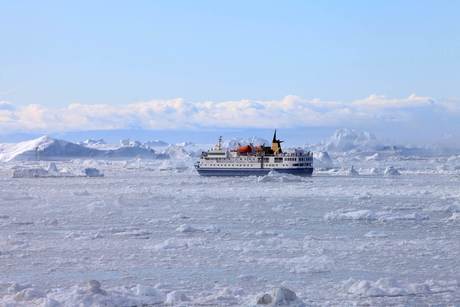Inmarsat’s successful mobile trial in Antarctica

Inmarsat has conducted a successful trial of its hybrid Ka- and L-band service Fleet Xpress, delivering mobile broadband to a marine crew aboard an adventure cruise ship in Antarctica.
Fleet Xpress uses Inmarsat’s Global Xpress network and reportedly delivers the world’s first globally available high-speed broadband service from a single network operator.
It was installed and successfully conducted on board the 1992-built, ice-class Ocean Nova, owned by Nova Cruising Ltd and operated by Nova Logistics, a polar expedition specialist, in one of the most hostile environments on the planet.
Inmarsat, along with Global Marine Networks (GMN) and Network Innovations, announced the milestone and subsequent commercial order for Fleet Xpress for the rest of the fleet.
Throughout the test, the Fleet Xpress service allowed passengers and crew to conduct daily communication activities beyond the three companies’ expectations in this extreme location.

“Our customers rely on us to provide cutting-edge satellite services,” said Dr Luis Soltero, chief technology officer of GMN.
“Fleet Xpress delivered on its promise of high-speed seamless mobile broadband service in one of the world’s most difficult areas for most satellite systems. Antarctica requires low-horizon satellite views through heavy cloud cover and precipitation. Fleet Xpress successfully overcame these conditions.”
In this trial, Network Innovations, one of Inmarsat’s first value-added resellers of Fleet Xpress, was able to provide its expertise and support to GMN and the crew of the Ocean Nova, which used a Cobham SAILOR 100GX antenna.
Ronald Spithout, president of Inmarsat Maritime, said: “Fleet Xpress is set to redefine maritime communications and will transform the way vessels are managed and optimised throughout the globe. This trial marks another important milestone for the launch of Fleet Xpress. By testing Fleet Xpress in such harsh conditions we are pushing the boundaries of what we can offer.”
Perth's new rail network control centre ready for operations
The new control centre, which covers roughly 1000 m2, will be responsible for...
5G mmWave extended to 14 km in nbn field trials
Live field trials of 5G mmWave technology in parts of the nbn Fixed Wireless network achieved...
Mavenir and Terrestar achieve NTN Voice over NB-IoT call
The achievement was conducted over a 3GPP-standardised NTN S-band spectrum, avoiding interference...





